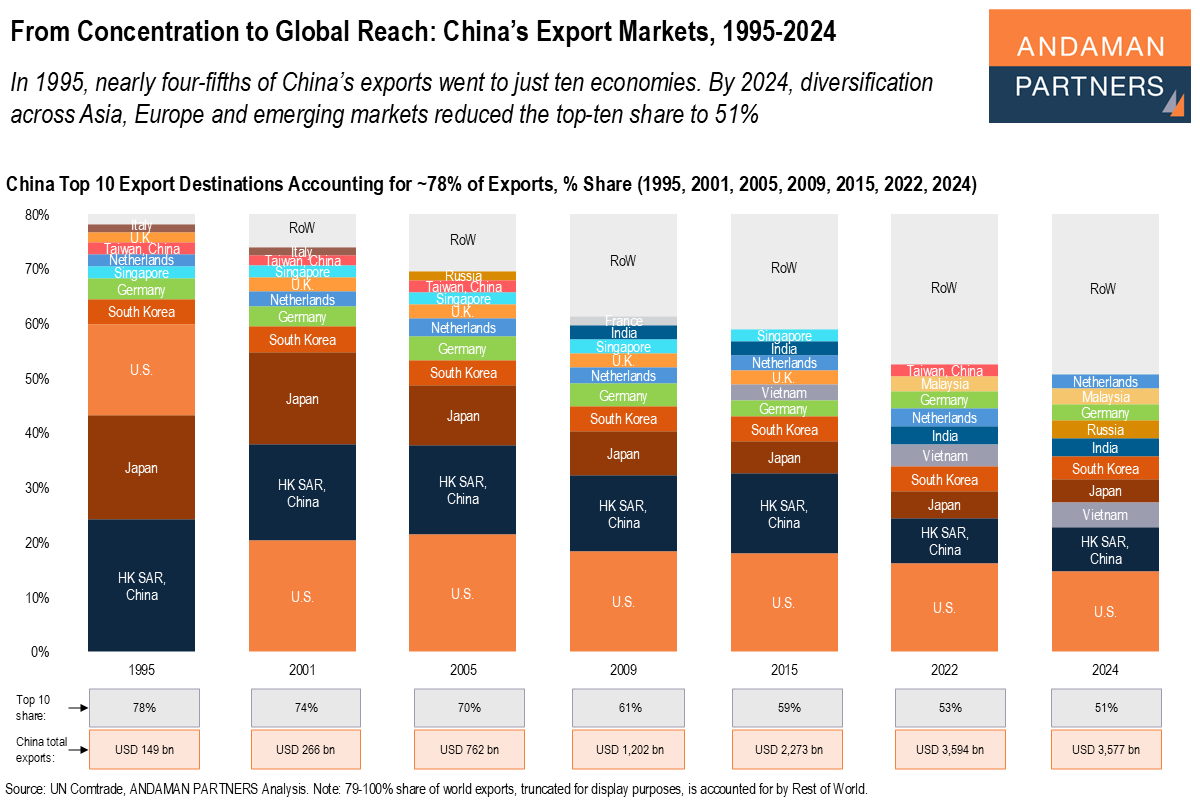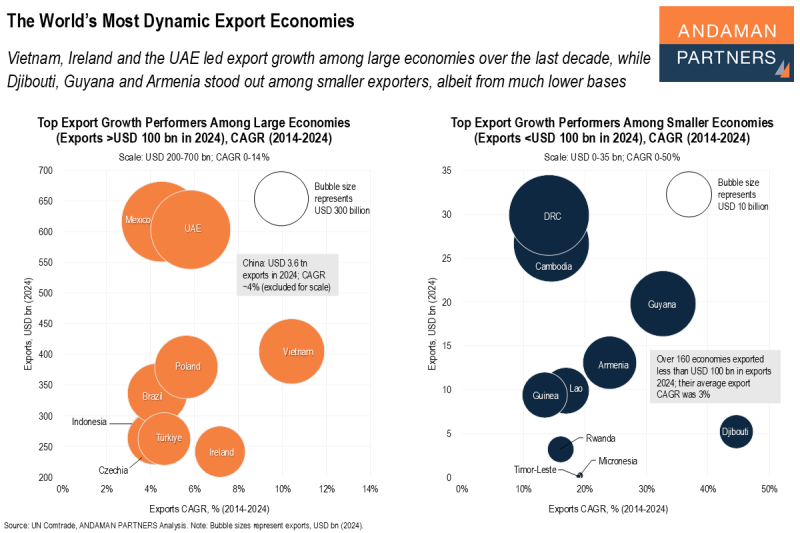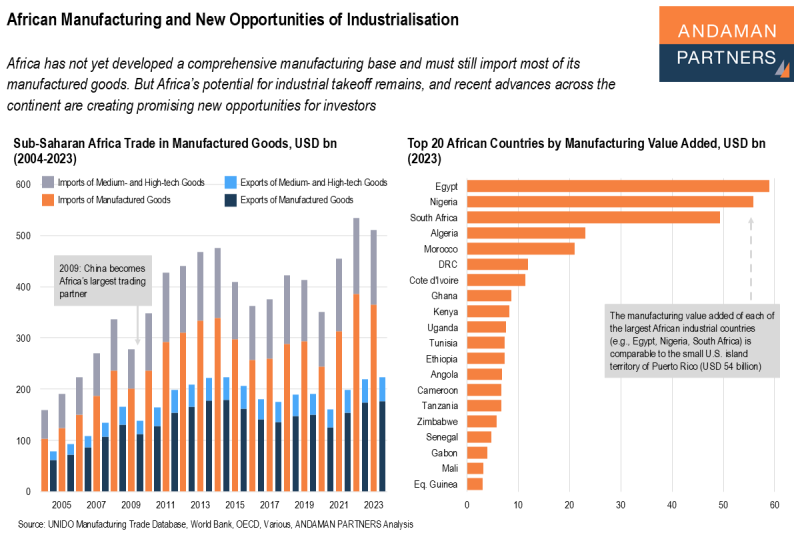In 1995, nearly four-fifths of China’s exports went to just ten economies. By 2024, diversification across Asia, Europe and emerging markets reduced the top-ten share to 51%.
China’s export footprint has widened dramatically over the past three decades, reducing its dependence on a handful of major buyers.
In the mid-1990s, China’s external demand was heavily concentrated: the U.S., Hong Kong SAR and Japan alone accounted for more than half of its exports. By 2024, that concentration had eroded as China expanded into a broader mix of regional markets.
In 2024, the top ten destinations accounted for just over half of total exports, reflecting a structural diversification of demand that mirrors China’s rise as a multidimensional trading economy.
This diversification was driven by two reinforcing trends: the deepening of intra-Asian supply chains and the emergence of new mid-sized markets across Europe, Southeast Asia, South Asia and the Middle East. As China moved up the value chain, from labour-intensive goods to electronics, machinery and vehicles, it unlocked demand in countries with rising industrial capacity and household consumption.
At the same time, China’s export relationships became less dependent on a small set of advanced economies, with incremental growth in dozens of markets rather than a select few.
The implications are significant for global trade. A more distributed demand base makes China’s export engine more resilient to cyclical shocks and geopolitical friction, while increasing the complexity of global supply networks connected to China.
For policymakers and multinational firms, this means China is now deeply embedded across a wider arc of the world economy. Even as some economies pursue diversification away from China, China has simultaneously broadened its own external reach, reinforcing its central role in global trade flows.
Also by ANDAMAN PARTNERS:
ANDAMAN PARTNERS supports international business ventures and growth. We help launch global initiatives and accelerate successful expansion across borders. If your business, operations or project requires cross-border support, contact connect@andamanpartners.com.

AAMEG Sundowner Event in Cape Town Ahead of Mining Indaba 2026
ANDAMAN PARTNERS is pleased to sponsor and support the AAMEG Pre-Indaba Cocktail.

ANDAMAN PARTNERS to Attend Future Minerals Forum 2026 in Riyadh, Saudi Arabia
ANDAMAN PARTNERS Co-Founders Kobus van der Wath and Rachel Wu will attend the Future Minerals Forum (FMF) in Riyadh, Saudi Arabia.

ANDAMAN PARTNERS to Attend Investing in African Mining Indaba 2026 in Cape Town
ANDAMAN PARTNERS Co-Founders Kobus van der Wath and Rachel Wu will attend Investing in African Mining Indaba 2026 in Cape Town, South Africa.
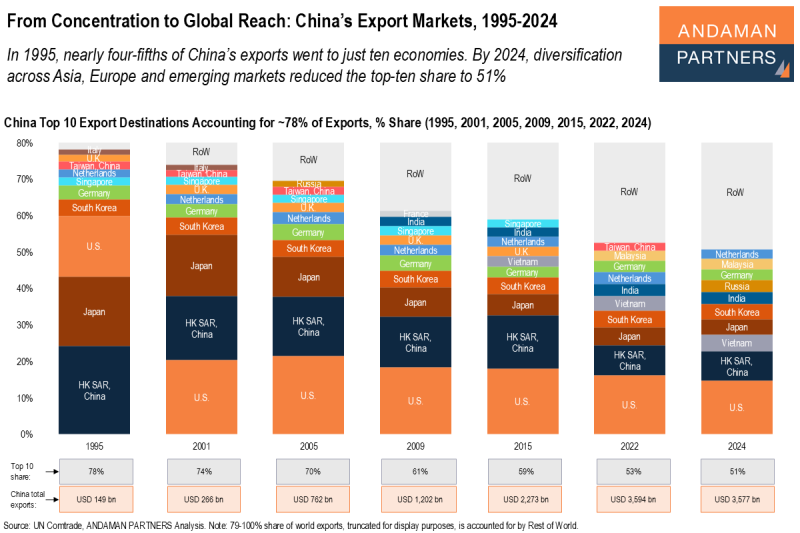
From Concentration to Global Reach: China’s Export Markets, 1995-2024
In 1995, nearly four-fifths of China’s exports went to just ten economies. By 2024, the top-ten’s share was reduced to 51%.
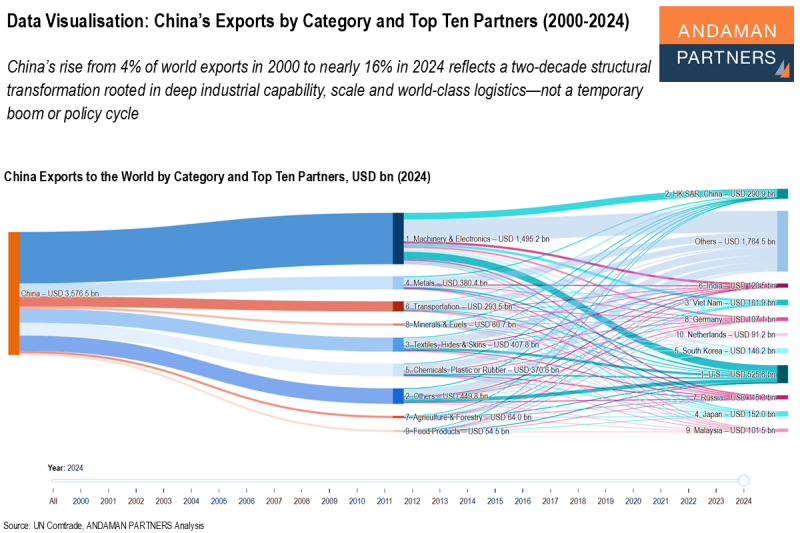
Data Visualisation: China’s Exports by Category and Top Ten Partners (2000-2024)
China’s rise from 4% of world exports in 2000 to nearly 16% in 2024 reflects a two-decade structural transformation.
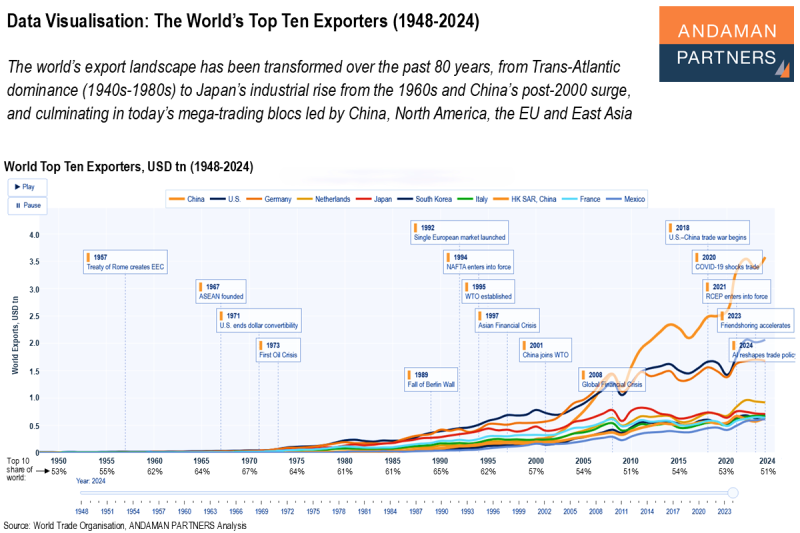
Data Visualisation: The World’s Top Ten Exporters (1948-2024)
The world’s export landscape has been transformed over the past 80 years, from Trans-Atlantic dominance to Japan’s and China’s rise and mega-trading blocs.

